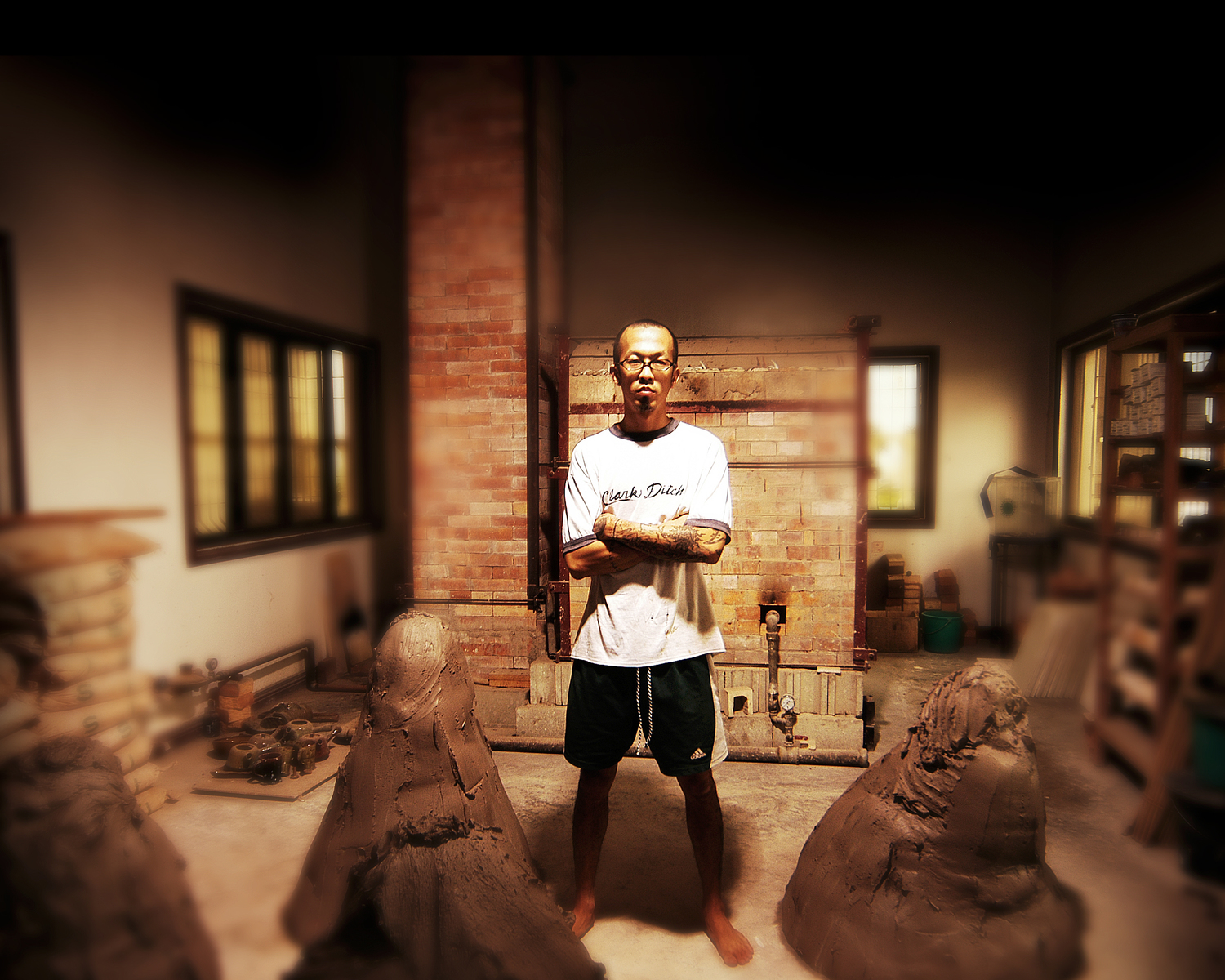"Prolific Self-expression through clay" Malaya Living, July 9, 1998 by Rowena C. Burgos
"Seven Months in the Philippines" is Hadrian Zamora Mendoza's diary of his innermost thoughts which he profoundly expresses through clay.
The exhibit, which will open tomorrow at 6:30pm at the foyer of the Metropolitan Museum of Manila and will run until July 17, showcases 70 earthenware and stoneware vessels which draw inspiration from the environment, nature, animals and people. The decorative objects will then be put on display until August 1 at the Met Shop.
"Most of these pieces are unintentional, meaning that their beauty lies in the unknown. I don't know where they came from but must have come from my mind. Upon completion of each piece, I take a step back and try to comprehend what has just happened during the creating process. Most of them, I believe, are expressions influenced by my personal contact with people, animals or other forms of nature. Basically, our environment here in the Philippines," said Hadrian.
Like the vase entitled "Sunset at Calatagan," which combines a rich surface of blended color and detail with a simple, curving form. This white and Pinatubo ash glazed stoneware reminds him of Calatagan where he spends his weekends to take a respite from his work on Mondays to Fridays, that is, creating pots of varied shapes from 9am to 6pm at the residence of fellow artist Jon Pettyjohn in Pansol, Laguna.
"It's not hard on the mind but kind of tiring mentally because you do it all day," said Hadrian.
On the other hand, "Self Portrait," a Pinatubo, chun, and tenmoku-glazed stoneware, speaks of Hadrian's passion as an artist. "It stands up straight on its toes. Like the artwork, I am starting to make a career as an artist. And it's really hard. I haven't considered myself a full-time artist. But that's what I'm trying to do. I think it comes out in my work."
"Seven Months in the Phllippines" will also display untitled works such as a porcelain vase with chun and ox-blood red glaze and a sculptured vase wit pinatubo and tenmoku glaze.
"Like a musician who doesn't think of anything while he plays, I just try to find things that relate with me. With some pieces, I find nothing so I don't name them. Sometimes, a title for a piece comes to my mind after a year," related Hadrian.
For Hadrian, the richness of an artwork shines through when its viewers could see something in them which they could relate to; when the piece does not only speak of the artist but more on a universal level.
"A painter-friend tells me not to worry if one understands the works or not. I just have to find my own meaning in the piece. And so does Jon Pettyjohn who is a big believer in making things that you like. He often tells me to do whatever I want and not to worry about people who will play with my art."
Some viewers who saw Hadrian's show last year say that his works look "too intense." Or that his sculptured vase depicts "a lot of anger" because of the cuts on the object.
"When clay is wet and is on the potter's wheel, it's really responsive to your hands with just the slightest movement. It's like an instrument that when you feel good on a certain day and you're in tune with the clay, it will just come up. You'll feel there's a lot of energy in you as soon as you create designs. I really have a hard time explaining my works and how I see them," says Hadrian.
It was three years ago when Hadrian first dabbled in pottery in the United States where he has been residing since he was a kid.
"I was brought there not by choice but by certain incidents that occur in life. A climate where one uses heaters during the colder seasons greatly affects the way a piece is made by breaking the natural effects of the environment upon the clay. So this show is special to me because it is the first time that I am able to work under natural conditions and in my place of birth," related Hadrian who plans to put up his own studio next year in a less congested place in the Philippines where he can offer pottery workshops.
And since Hadrian began to learn the art and techniques of pottery, the more he became eager to know everything about his culture and to go into a deeper quest for his roots. "I have returned to the Philippines to search for my roots and understand the true meaning of clay. Majority of these pieces tend to look sculptural. But by working under Jon Pettyjohn, I've found a bridge that might lead me to my roots. So as I take a step back and try to comprehend this show, I hope that viewers will experience a fraction of the energy that I have put into these pieces."
